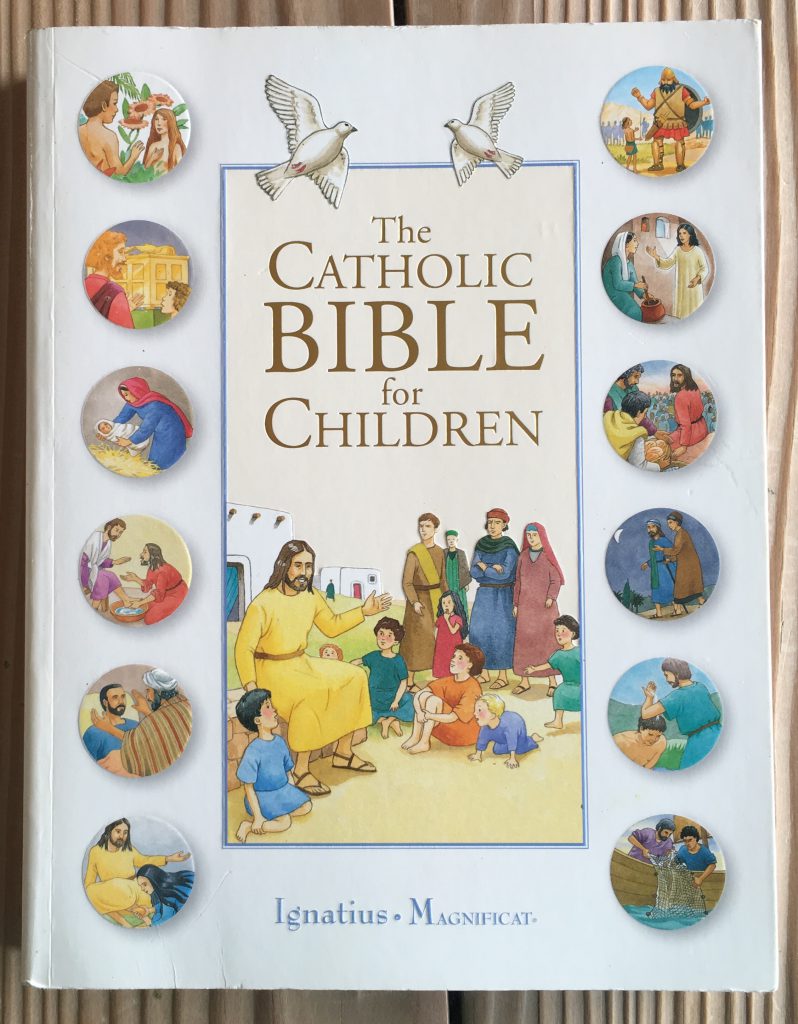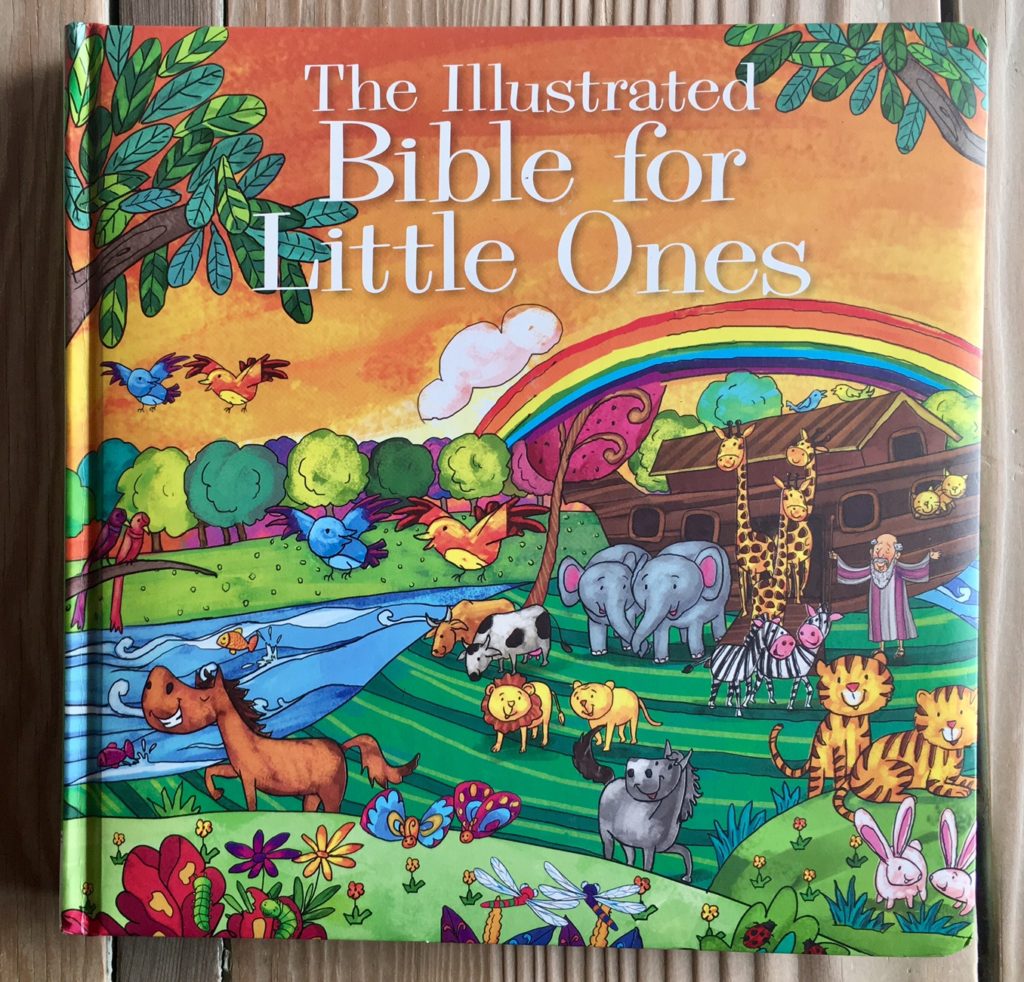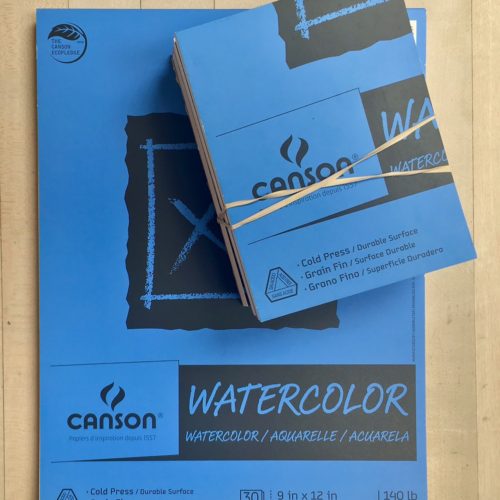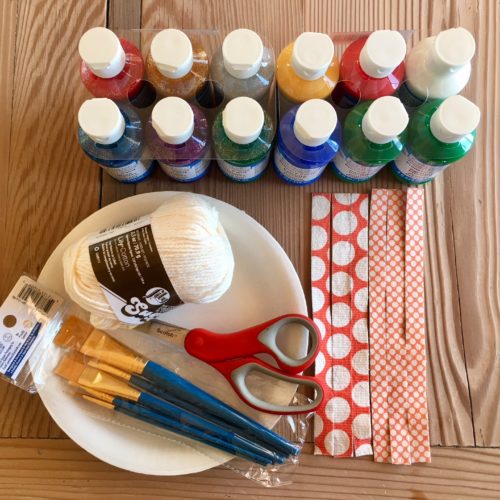“My lord, you swore to your servant by the LORD, your God, ‘Solomon your son will be king after me; it is he who shall sit upon my throne.’”
Source: USCCB.org “Kings” chapter 1:17
“As the LORD has been with my lord the king, so may he be with Solomon, and make his throne even greater than that of my lord, King David!”
Source: USCCB.org “Kings” chapter 1:37
For Parents to Share with Their Children
The Kings–Saul, David and Solomon
The first Israelite king, Saul, was chosen by God and anointed by the prophet, Samuel, to lead the Israelite people. He was not the most influential, rich or powerful person for the job, but like David, who follows him, God chose him for other reasons. Sadly, when God, through Samuel, gave Saul a command to wait for the return of Samuel in a battle, he did not wait.
“If you had obeyed God’s word, you would have been the founder of a great nation. But because you went against his word, your sons will now never succeed you: another family, not yours, will rule Israel.”
From The Children’s Illustrated Bible, Page 113
King David was chosen by God, again through Samuel the Prophet, and he also was the least important–a young shepherd– and the youngest of the sons of Jesse, a different family from Saul’s. God wanted David for other reasons. He became a brave warrior, a great king, and built Jerusalem. King David wrote many of the Psalms. These songs and poems of praise and thanks are known as the Davidic Psalms–psalms attributed to David as the author.
“There are 150 psalms…On this basis, 73 are attributed to King David, twelve to Asaph, eleven to the sons of Korah, two to Solomon, one to Moses, and others to Heman and Ethan”
Source: CatholicAnswers.org “Psalms” by Antonio Fuentes
David lived a long life, filled with both good and bad decisions and actions. He was a human being who did right and also sinned. David had many children and many wives. After David’s death, his son, Solomon, succeeded him to the throne.
King Solomon was known for his wisdom. He is most famous for his decision on the rightful maternity (pre-DNA testing!) of a baby over whom two mothers were claiming as their own. Both mothers had a baby at the same time in the same house. One baby died and the two mothers were fighting over who was the rightful mother of the surviving baby. Solomon suggested they slice the baby in half. The lying mother said, “Cut him in two!” The real mother cried out, “Do not kill my baby!” These reactions told King Solomon who the real mother was, indeed.
“The king wrote many wise sayings: most of “Book of Proverbs” is thought to have been written by him. Under Solomon’s rule the Israelites entered a golden age of peace and prosperity. This was crowned by the building of the temple, named after him.”
From The Children’s Illustrated Bible, Pages 134-135
Excerpts from Children’s Bibles on Saul, David, and Solomon
King Saul–An Excerpt from “Saul, the First King of the Israelites”
“Samuel grew old, and the people asked him to appoint a king to rule over them. Samuel asked God what to do. ‘There is a man called Saul, the tribe of Benjamin, and he is the one you must choose. He will make himself known to you.’
Shortly afterward, a tall young man came up to Samuel on a hill outside the city. ‘I have lost three of my donkeys,’ he said. ‘I know you are a prophet; can you tell me where they are?’
‘Your donkeys are safe,’ Samuel replied. ‘Now come with me, for you are to be the first king of Israel.’ Saul was astonished. ‘But I am unimportant!’ he exclaimed. ‘I am from the tribe of Benjamin, the smallest of all the tribes of Israel, and my family is the least important family in the tribe.’ Samuel reassured him, and led the astonished Saul back to his house, where he gave him food and then anointed him with oil, pouring it over his head.
‘With this oil, he said, ‘I declare you king.'”
From The Children’s Illustrated Bible, Pages 112-113

King David–An Excerpt from “David and His Brothers”
from: The Catholic Bible for Children “David and His Brothers” 1 Samuel 16:1-13 Pages 60-61

“One day, God sent Samuel to see Jesse: ‘I have chosen the future king from among his sons.’ Jesse called seven of his sons and presented them to Samuel one by one. The only one missing was David, the youngest, who was tending his sheep. ‘But David is just the one I want to see!’ Samuel said to Jesse. ‘Send for him!’
Samuel placed his hand on David’s head, saying, ‘David, it is you who will be king of Israel.’
“‘The Spirit of the Lord came mightily upon David from that day forward.'”
(1 Samuel 16-13)

King Solomon–An Excerpt from “God Speaks to Solomon” (1 Kings 3)
From: The Illustrated Bible for Little Ones page 123

“Solomon was David’s son. When David died as an old man, Solomon was crowned king. Soon after, God spoke to Solomon in a dream and told him he would give him whatever he asked for.
Solomon thought carefully, and then instead of asking for wealth or long life or great victories, he asked for wisdom to rule wisely over God’s people for he wanted to be a good king like his father.
God was pleased with Solomon’s answer. ‘I will give you wisdom,’ God said, ‘but I will also give you those things you didn’t ask for!’
When Solomon awoke, he felt comforted and strengthened knowing that God was with him.”
Our Prayer
We Read Aloud the “Nicene Creed”
Source: scborromeo.org
Our Readings–Psalms
Psalms chapter 139
Source: USCCB.org
1
For the leader. A psalm of David.
I
“LORD, you have probed me, you know me:
2
you know when I sit and stand;*a
you understand my thoughts from afar.
3
You sift through my travels and my rest;
with all my ways you are familiar.
4
Even before a word is on my tongue,
LORD, you know it all.
5
Behind and before you encircle me
and rest your hand upon me.
6
Such knowledge is too wonderful for me,
far too lofty for me to reach.b
7
Where can I go from your spirit?
From your presence, where can I flee?
8
If I ascend to the heavens, you are there;
if I lie down in Sheol, there you are.c
9
If I take the wings of dawn*
and dwell beyond the sea,*
10
Even there your hand guides me,
your right hand holds me fast.
11
If I say, ‘Surely darkness shall hide me,
and night shall be my light’*—
12
Darkness is not dark for you,
and night shines as the day.
Darkness and light are but one.d
II
13
You formed my inmost being;
you knit me in my mother’s womb.e
14
I praise you, because I am wonderfully made;
wonderful are your works!
My very self you know.
15
My bones are not hidden from you,
When I was being made in secret,
fashioned in the depths of the earth.*
16
Your eyes saw me unformed;
in your book all are written down;f
my days were shaped, before one came to be.
III
17
How precious to me are your designs, O God;
how vast the sum of them!
18
Were I to count them, they would outnumber the sands;
when I complete them, still you are with me.g
19
When you would destroy the wicked, O God,
the bloodthirsty depart from me!h
20
Your foes who conspire a plot against you
are exalted in vain.
IV
21
Do I not hate, LORD, those who hate you?
Those who rise against you, do I not loathe?i
22
With fierce hatred I hate them,
enemies I count as my own.
23
Probe me, God, know my heart;
try me, know my thoughts.j
24
See if there is a wicked path in me;
lead me along an ancient path.*”
Note* The symbols and letters are related to the commentary on the USCCB.org webpage that has this reading, “Psalms” chapter 139. All of the Bible readings have this notation for readers.
An Excerpt for Children
An Excerpt from Catholic Book of Bible Stories “God Knows Me” Page 73
Psalm 139:1-6
“‘Lord, you have examined me and you know me.
You know everything I do;
from far away you understand all my thoughts.
You see me, whether I am working or resting;
you know all my actions.
Even before I speak,
you already know what I will say.
You are all around me on every side;
you protect me with your power.
Your knowledge of me is too deep;
it is beyond my understanding.'”
Writing Project–Write on the back of the art project paper before painting.

Have your child write the following prayer on a piece of watercolor paper. Use front side for art project.
From
Catholic Book of Bible Stories:
Prayer
“Thank you for loving me just as I am.
In the name of the Father, and of the Son,
and of the Holy Spirit.”
“Amen.”
(Page 75)
Older children might choose a longer psalm (or portion of a psalm) to write out. Psalm 132 talks about King David and his ancestors and one important descendant:
Sample Writing Selection
(A Prophetic Reference to Jesus and the Kingdom of God)
“Here I will make one of David’s descendants a great king;
here I will preserve the rule of my chosen king.
I will cover his enemies with shame,
but his kingdom will prosper and flourish.”
Excerpt from Psalm 132:17
Psalm 132
“In Praise of the Temple”
“1 LORD, do not forget David
and all the hardships he endured.
2 Remember, LORD, what he promised,
the vow he made to you, the Mighty God of Jacob:
3′ I will not go home or go to bed;
4 I will not rest or sleep,
5 until I provide a place for the LORD,
a home for the Mighty God of Jacob.’
6 In Bethlehem we heard about the Covenant Box,
and we found it in the fields of Jearim.
7 We said, ‘Let us go to the LORD‘s house;
let us worship before his throne.’
8 Come to the Temple, LORD, with the Covenant Box,
the symbol of your power,
and stay here forever.
9 May your priests do always what is right;
may your people shout for joy!
10 You made a promise to your servant David;
do not reject your chosen king, LORD.
11 You made a solemn promise to David—
a promise you will not take back:
‘I will make one of your sons king,
and he will rule after you.
12 If your sons are true to my covenant
and to the commands I give them,
their sons, also, will succeed you for all time as kings.’
13 The LORD has chosen Zion;
he wants to make it his home:
14 ‘This is where I will live forever;
this is where I want to rule.
15 I will richly provide Zion with all she needs;
I will satisfy her poor with food.
16 I will bless her priests in all they do,
and her people will sing and shout for joy.
17 Here I will make one of David’s descendants a great king;
here I will preserve the rule of my chosen king.
18 I will cover his enemies with shame,
but his kingdom will prosper and flourish.'”
Source: BibleHub.com
Art Project–Prayer Shawl with Royal Blue
As a Jew, Jesus Would Have Worn a Prayer Shawl
From Scripture:
“And a woman afflicted with hemorrhages for twelve years,* who [had spent her whole livelihood on doctors and] was unable to be cured by anyone, came up behind him and touched the tassel on his cloak. Immediately her bleeding stopped.” Source: USCCB.org “Luke” chapter 8:43-44
“The Healings at Gennesaret.”
“After making the crossing, they came to land at Gennesaret. When the men of that place recognized him, they sent word to all the surrounding country. People brought to him all those who were sick and begged him that they might touch only the tassel on his cloak, and as many as touched it were healed.” Source: USCCB.org “Matthew” chapter 14:34-36
Note from “Matthew” chapter 9, USCCB.org regarding the importance of having a “tassel” on a prayer shawl
“* [9:20] Tassel: possibly “fringe.” The Mosaic law prescribed that tassels be worn on the corners of one’s garment as a reminder to keep the commandments (see Nm 15:37–39; Dt 22:12).”
“The blue tzitzit (tassels) on Jewish prayer shawls remind worshipers of the sea, the sky and God’s holy throne.” BiblicalArchaeology.org
The Jewish men since antiquity have wrapped themselves in a specific shawl before praying. Historically, they are made of white wool decorated with the royal blue color that began with the ancient kings. (Today, Jewish women may wear them for prayer, too, but not in all synagogues or countries.) I remember hearing news about tiny swatches of intricately woven cloth made from wool and linen, that contained a blue dye made from a small gland of the sea snail (Murex trunculus). This species was known to produce a murex dye the color of dark purple. The artifacts were found in an area being excavated that was believed to be King Solomon’s temple under the Temple Mount area, which is where the Muslim Dome of the Rock stands today. Connecting the special dyed cloth fragments to the ruins, helped archaeologists link the possible location of the Temple of King Solomon on the Temple Mount in Jerusalem. The dye was only used on clothing for royalty and priests.
Methods and Materials
The strips of material alongside of the plate are cut from a Lipman mop. I thought they’d be great as a “stamp” to imprint straight lines. They are made of an excellent fabric for mopping– unfortunately, they immediately absorbed all the paint and imprinted very little of it. So I resorted to using a paint brush for the lines and also dipped yarn into paint for a more abstract effect, shown at very top of this post. The important lesson here is to learn that the Jewish people for thousands of years have prayed wearing a special shawl, and one of the commandments from God was to tie tassels at all four corners of the shawl. It’s also important to know the royalty and priests had a special color just for them–“Royal Blue”–which is made from a tiny part of a sea snail!











